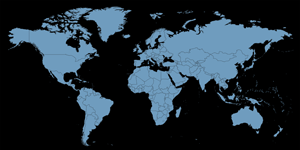Global Issues


Egypt
• Egypt missing an estimated 1.3 million women due to cultural preferences.
• Source, transit, and destination country for women and children subjected to forced labor and sex trafficking.
• Destination country for women from Iraq forced into prostitution.
• Transit country for women trafficked from Uzbekistan, Moldova, Ukraine, Russia, and other Eastern European countries to Israel for commercial sexual exploitation.
• Young female Sudanese refugees, including those under 18, may be coerced into prostitution in Cairo’s nightclubs by family or Sudanese gang members.
• An estimated 200,000 to one million street children – both boys and girls – are subjected to sex trafficking and forced begging.
• Sex tourism in Luxor and at beach resorts such as Sharm El-Sheikh. Most sex tourists from Europe and the Persian Gulf region.
• Wealthy men from the Gulf reportedly travel to Egypt to purchase “temporary” or “summer marriages” with Egyptian females, including girls under 18.
• Child sex tourism occurs in Egypt, particularly in Cairo, Alexandria, and Luxor.
• 32% of women in Egypt report intimate partner physical violence in their lifetime.
• 6.6% of women report sexual intimate partner violence in their lifetime.
• 47.4% of women report intimate partner and/or non-partner physical violence in their lifetime.
• 6.2% report abuse during pregnancy.
• According to a 2007 study by the National Center for Criminal and Social Research, there were approximately 20,000 cases of rape annually.
Advocacy:
• Egyptian Organization for Human Rights.
• Association for Human Rights and Legal Aid.
• Nadim Center for the Rehabilitation of Victims of Torture and Violence, Association for Freedom of Thought and Expression.
• Egyptian Center for Women’s Rights.
Sources: UN Women Violence against Women Prevalence Data: Surveys by Country 2011; Stephan Klasen and Claudia Wink, University of Munich: A Turning Point in Gender Bias in Mortality? (2001); US Department of State Trafficking in Persons Report 2011
